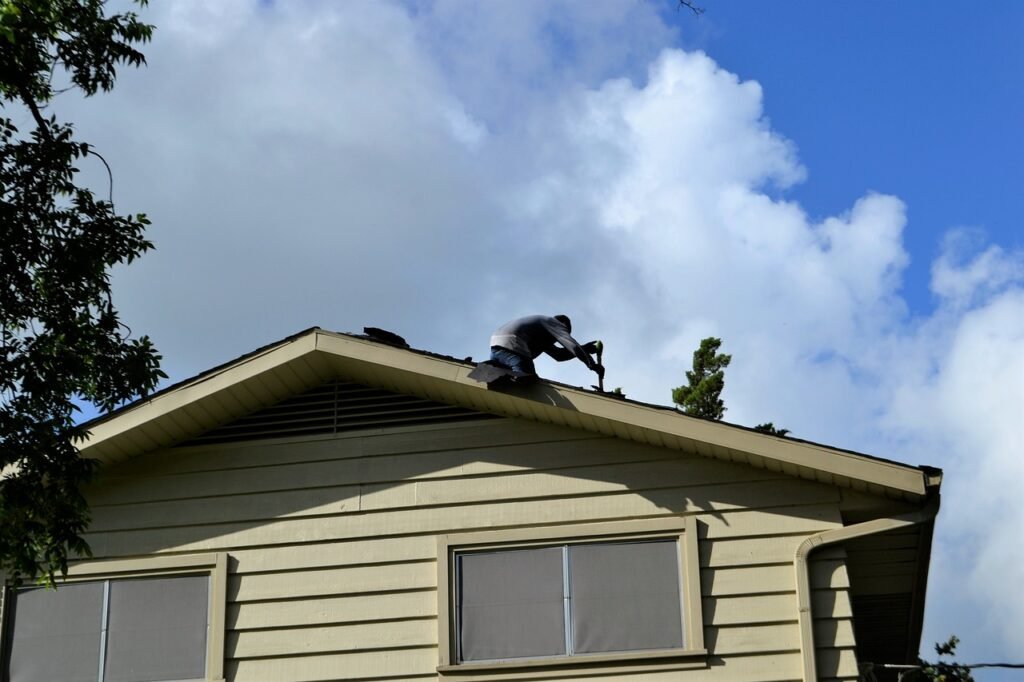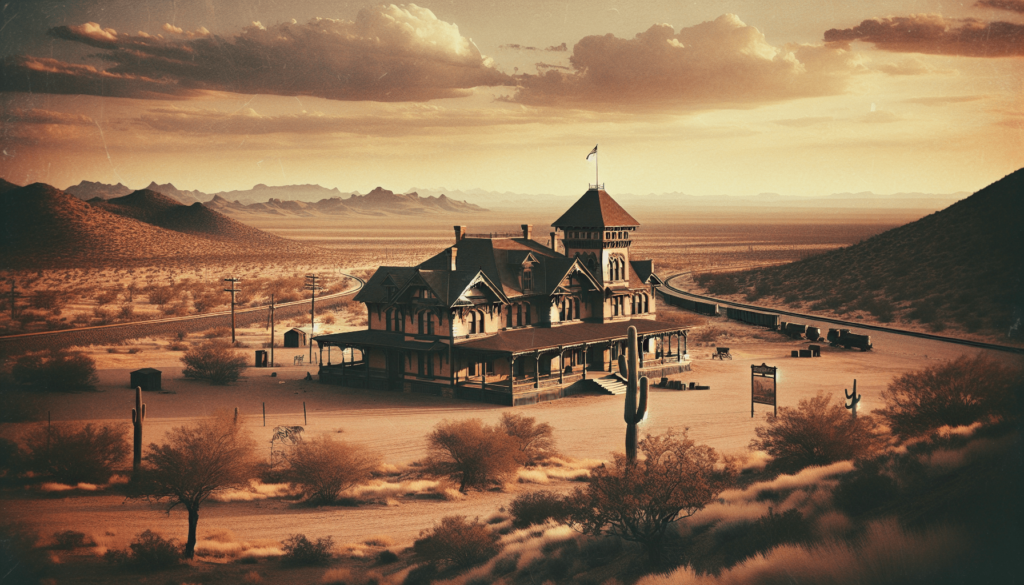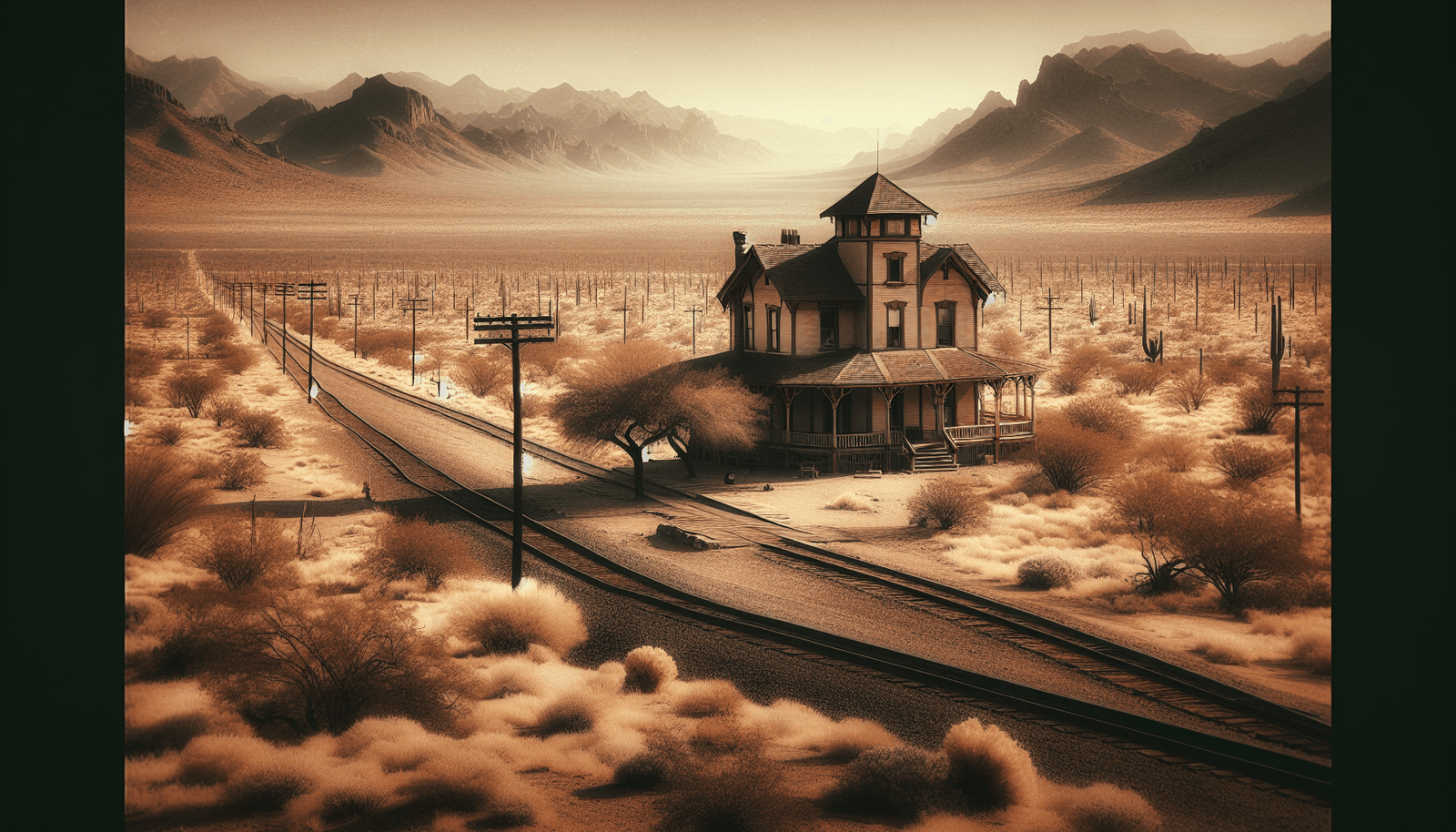Imagine stepping into the echoes of the El Garces, the last Harvey House standing in Arizona, a place brimming with history and tales of the past. This famed establishment, once a beacon of hospitality in the heart of the desert, now serves as a poignant reminder of an era gone by. Through exploring the El Garces, you’ll uncover the rich tapestry of stories that made this Harvey House a legendary stopover for weary travelers seeking comfort and a warm meal. Let’s take a closer journey into the legacy of the El Garces and discover the allure that has kept its memory alive through the years.

This image is property of pixabay.com.
The Historical Significance of El Garces
Overview of Harvey Houses
As you dive into the fascinating history of the American West, you’ll uncover the pivotal role of the Harvey Houses, a chain of hotel-restaurants. These establishments not only offered quality dining and accommodations but also set a high standard for hospitality across the United States. Founded by the visionary entrepreneur Frederick Harvey, they became essential waypoints for travelers navigating the vast expanses of the country.
El Garces as a cultural nexus in Needles, California
In the heart of Needles, California, El Garces stands as a testament to the golden era of rail travel. Named after Father Francisco Garces, a missionary explorer, this Harvey House emerged as a cultural nexus, bridging the gap between the bustling life of the railroads and the tranquil beauty of the Mojave Desert. Its strategic location made it a vital rest stop for weary travelers venturing West.
The role of El Garces in the expansion of the American West
El Garces played a crucial role in the expansion of the American West, not just as a haven for travelers but also as a catalyst for growth. By providing a reliable network of accommodations and eateries, it facilitated the movement of people, goods, and ideas across this vast territory, shaping the development of the regions it served.
Frederick Harvey and His Legacy
Biography of Frederick Harvey
Born in London in 1835, Frederick Harvey’s journey to becoming a hospitality magnate began with his arrival in the United States. His dedication and innovative approach to service laid the foundation for the renowned Harvey House chain. Harvey’s vision was to provide unmatched service and quality, revolutionizing the standards of hospitality in the American West.
The inception and growth of the Harvey House empire
The inception of the Harvey House empire traces back to an agreement with the Santa Fe Railway, setting the stage for the establishment of Harvey Houses along the railroad’s extensive network. Under Harvey’s leadership, this alliance blossomed, and the Harvey Houses became synonymous with impeccable service and culinary excellence, fostering the growth of the American hospitality industry.
Impact of Harvey Houses on American hospitality
The Harvey Houses introduced a level of sophistication and reliability that was unprecedented in the American West. They not only elevated dining and accommodation standards but also played a vital role in employing and empowering women, known as Harvey Girls, who became iconic figures in this era. The Harvey House legacy continues to influence the hospitality industry, embodying a commitment to quality and service.
Architecture and Design of El Garces
Architectural influences and style
El Garces is an architectural jewel, showcasing influences from the Mission Revival and Spanish Revival styles. Its design reflects a harmonious blend of elegance and functionality, with expansive archways, tiled roofs, and stucco walls that speak to the aesthetic sensibilities of the early 20th century.
Key features and design elements
The key features of El Garces, including its grand lobby, spacious dining room, and inviting guest rooms, were crafted with meticulous attention to detail. Stained glass windows, handcrafted tiles, and ornate woodwork exemplify the elegance that characterized Harvey Houses, inviting guests into a world of sophistication and comfort.
Restoration efforts and historical preservation
Over the years, El Garces has undergone significant restoration efforts to preserve its historical significance and architectural beauty. These endeavors, driven by community support and heritage organizations, aim to safeguard this iconic landmark for future generations, ensuring that its legacy continues to enrich our understanding of America’s past.
The Golden Age of Rail Travel
Railroads and their role in American expansion
The railroads were the lifelines of the American expansion, transforming the landscape and propelling the nation into a new era of connectivity and growth. As steel tracks stitched together the vast continent, they opened up unprecedented opportunities for commerce, communication, and travel.
Harvey Houses as an integral part of railroad travel
Harvey Houses, strategically located along the railroad routes, became integral to the rail travel experience. They provided travelers with reliable places to rest and dine, setting a standard of luxury and comfort that elevated the journey itself into an unforgettable adventure.
The experience of traveling by train during the Harvey House era
Traveling by train during the Harvey House era was characterized by a sense of wonder and elegance. From the refined dining experiences aboard the trains to the grandeur of stopping at a Harvey House, passengers were treated to an unparalleled level of service and hospitality, making each journey memorable.

This image is property of pixabay.com.
The Decline of Harvey Houses
Factors contributing to the decline
The decline of Harvey Houses can be attributed to several factors, including the rise of automobile travel, the expansion of the highway system, and the changing dynamics of American travel. As more travelers opted for the freedom of the road over rail travel, the demand for Harvey House services diminished.
The transition of the American travel industry
The American travel industry underwent a significant transformation, shifting from railroads to highways as the primary mode of long-distance travel. This transition marked the end of an era for Harvey Houses, as their role in the hospitality landscape evolved to accommodate changing travel preferences.
Preservation of Harvey Houses in modern times
Despite their decline, the preservation of Harvey Houses in modern times reflects a deep appreciation for their historical and cultural significance. Efforts to maintain and repurpose these iconic buildings underscore their enduring legacy, ensuring that their stories continue to inspire future generations.
El Garces Today: A Monument to the Past
Current state and usage of El Garces
Today, El Garces stands as a monument to the past, having been revitalized to serve the community in new and meaningful ways. While it may no longer operate as a Harvey House, its role as a historical landmark and cultural hub remains intact, offering visitors a unique glimpse into a bygone era.
The importance of El Garces in local history and culture
El Garces occupies a special place in local history and culture, symbolizing the spirit of innovation and progress that defined the Harvey House era. Its survival and preservation are testaments to the community’s dedication to honoring the rich tapestry of American history.
Community and tourist engagement with El Garces
The engagement of both the community and tourists with El Garces is crucial to its ongoing relevance and preservation. Through educational programs, cultural events, and other initiatives, El Garces continues to be a vibrant part of the local landscape, bridging the gap between the past and present.

Culinary Traditions of the Harvey Houses
Significance of dining at Harvey Houses
Dining at Harvey Houses was a hallmark of the rail travel experience, offering travelers an exceptional culinary journey.

